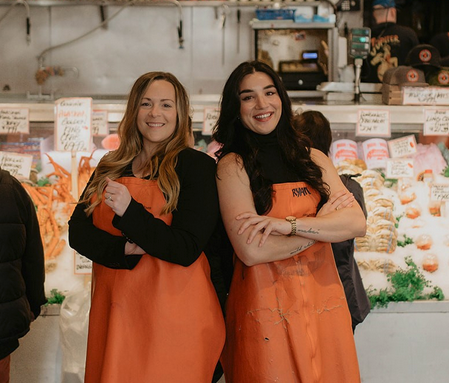Have you ever caught yourself clicking the link after watching someone unpack an amazon box? Or maybe you’ve commented “link” to have that delicious looking specialty peanut butter sent directly to your DM’s. These are the new consumer shopping habits propelled by influencer marketing – a marketing category worth over $22 billion globally and growing year after year.
For those who haven't yet found themselves swayed into impulsive online shopping habits by their social media “besties”, let us explain.
The influencer marketing strategy leverages online personalities who have a dedicated social media following and are considered experts, or influential, within a particular niche or industry. These individuals, known as influencers, have the ability to not only affect the purchasing decisions of their followers, but their opinions as well because of their authority, knowledge, or relationship with their audience.
This type of marketing is the key to brand awareness and cohesive communication among the gen Z and millennial audiences that seafood has struggled to reach.
Despite seafood being a nutritious and versatile food choice, it has often been overshadowed by other protein options in the minds of young consumers - a lot of that has to do with the fact that young consumers, who are the generation of “oversharing”, don’t know nearly enough about seafood because we haven’t been telling them about seafood.
Influencers, with their ability to speak directly to young people through platforms like Instagram, TikTok, and YouTube, represent a golden opportunity for the seafood industry to bridge this gap.
Partnering with influencers who have the ability to authentically connect with younger audiences gives seafood an opportunity to tap into a previously untapped market. Influencers are professionals when it comes to creating engaging content. We just need to give them a reason to showcase the variety, sustainability, and health benefits of seafood in ways that traditional marketing strategies have struggled to achieve. This not only helps in raising seafood awareness but also in rebuilding a positive perception of seafood that the industry has struggled to maintain due to the spread of misinformation.
Consumers, especially young consumers, want the seafood industry to overshare in the same way that their favorite influencers do on social media. In the minds of the young, social savvy consumer, if you're not sharing, you're hiding something. They want you to share in a way that is educational, entertaining, and from a source they can trust; aka their favorite influencers on social media.
So let’s outline the clear benefits of Influencer Marketing.
● Targeted Reach: Influencers have built a following of individuals who are interested in specific topics or niches. By partnering with influencers who align with your values and messaging, brands can access a highly targeted audience that aligns with their target demographics, interests, and purchasing behaviors.
● Trust and Authenticity: Influencers have a strong bond with their followers; they’ve established trust over their time online, so much so that followers feel like they’re “friends” with the influencers. When influencers recommend a product or service, their audience is more likely to perceive it as a genuine recommendation rather than traditional advertising - the same way you would receive a recommendation from a friend or family member. This relationship generally means followers are more likely to make a purchase based on an influencer’s recommendation.
● Increased Brand Awareness: Collaborating with influencers allows brands to tap into their existing audience and increase brand awareness. Influencers have the ability to introduce a brand to a wide audience, including individuals who may not have been previously aware of the brand or its offerings.
● Social Proof and Credibility: When influencers endorse a product or service, it provides social proof that the brand is reputable and trustworthy. Consumers are more likely to trust recommendations from influencers they follow and admire, leading to increased credibility for the brand.
● Content Creation and Distribution: Influencers are skilled content creators who know how to create engaging and visually appealing content that resonates with their audience. By partnering with influencers, brands gain access to high-quality content that can be shared across various social media platforms, extending the reach of their marketing efforts.
● Cost-Effectiveness: Influencer marketing can be more cost-effective than traditional advertising channels, especially for reaching niche or micro-targeted audiences. Instead of investing in expensive ad placements, brands can collaborate with influencers who already have a dedicated following within their target market.
● Measurable Results: Influencer marketing campaigns can be tracked and measured using various metrics such as reach, engagement, click-through rates, conversions, and ROI. This allows brands to evaluate the effectiveness of their campaigns and optimize their strategies for better results over time.
The opportunity for seafood in influencer marketing lies in the ability to connect with consumers in an authentic and meaningful way. By prioritizing marketing budgets in the influencer space and being strategic about the selection of influencers, seafood has an opportunity to become visible to new audiences. The industry needs to focus on driving brand awareness and engagement to ultimately increase sales and revenue and build a loyal customer base within the younger audience.







